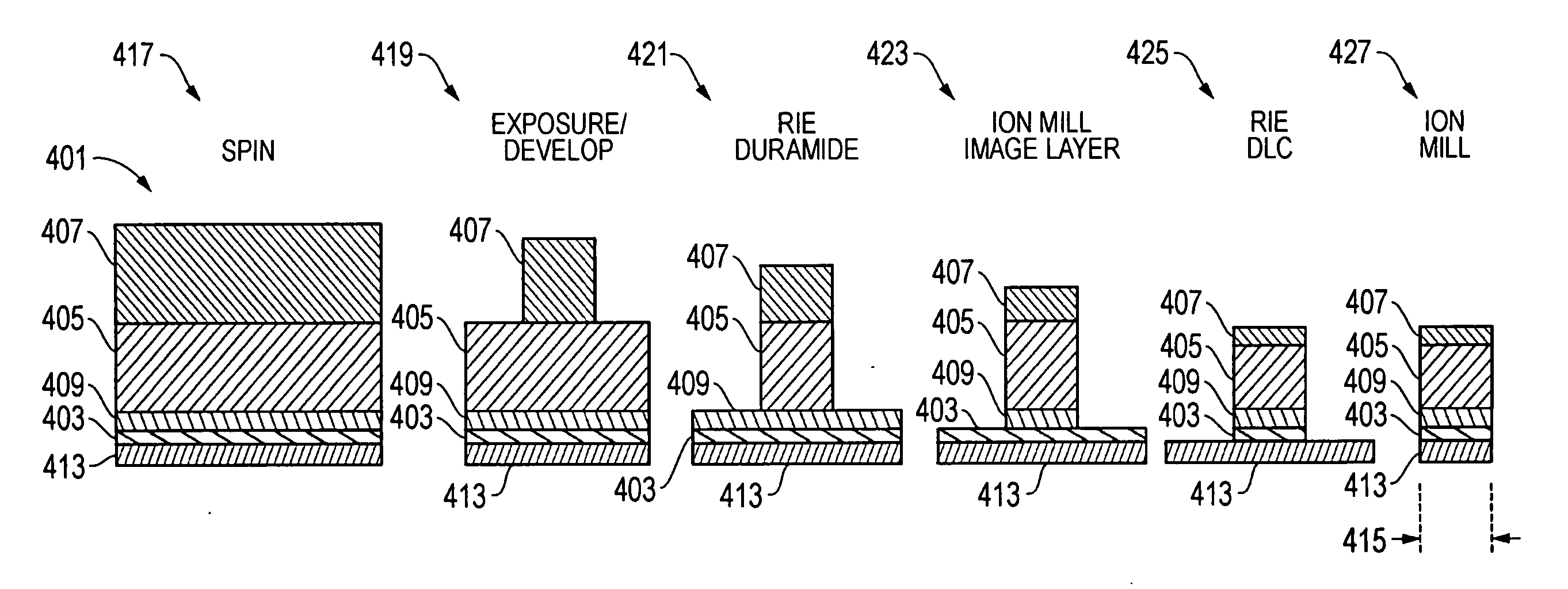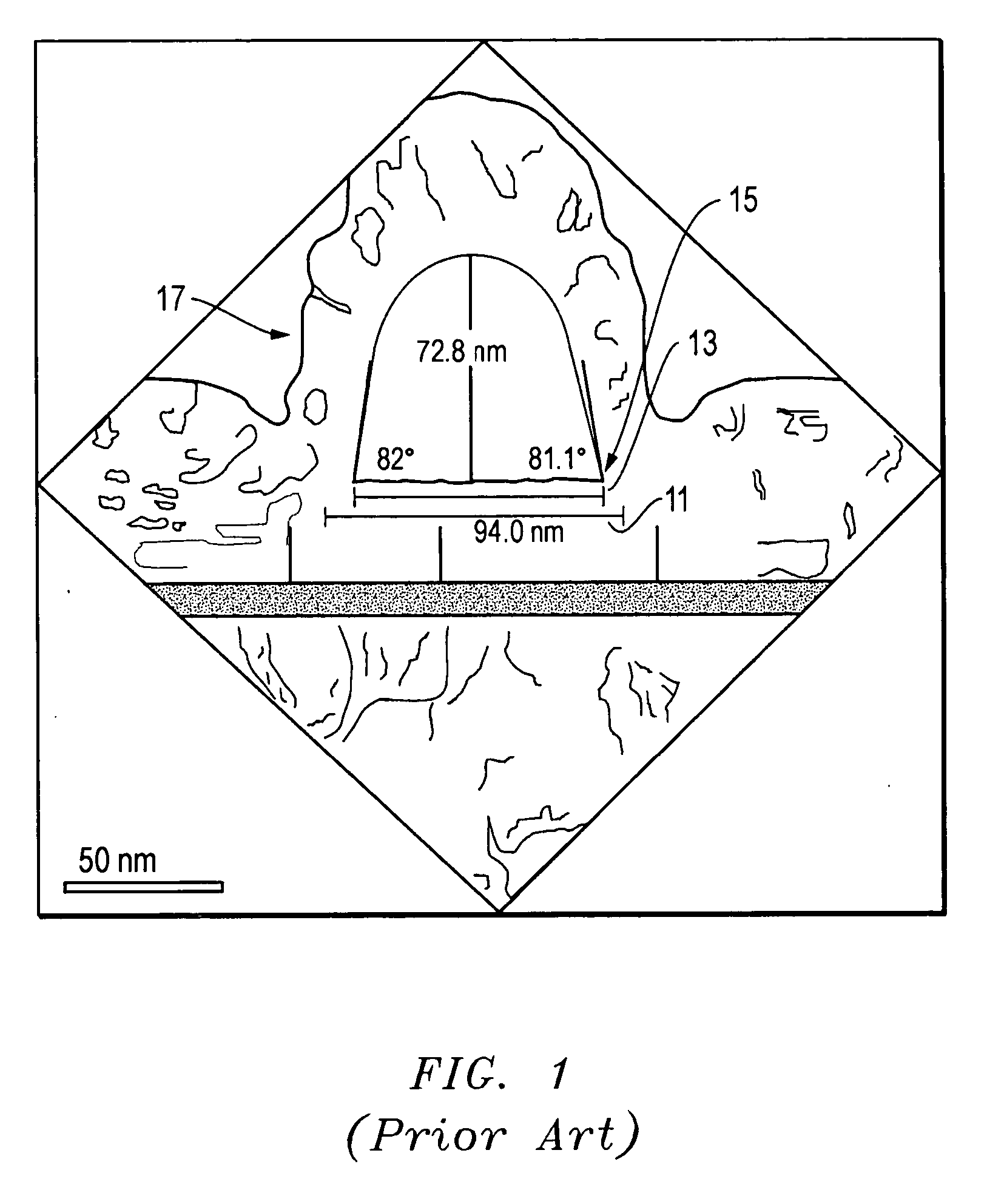Method for sensor edge control and track width definition for narrow track width devices
a technology of narrow track width and sensor edge, applied in the field of masking devices, can solve the problems of large junction variation, track width (tw) control and junction definition problems, and the inability to obtain well-defined dlc edges, so as to achieve the effect of minimizing the roughness of line edges
- Summary
- Abstract
- Description
- Claims
- Application Information
AI Technical Summary
Benefits of technology
Problems solved by technology
Method used
Image
Examples
Embodiment Construction
[0014] Referring to FIG. 3, one embodiment of the present invention is shown. At its most basic level, the present invention comprises a system and method of forming masks for structures having relatively narrow track widths. In this disclosure, “narrow” TWs are defined as those less than approximately 100 nm, but this depends upon the application and the processes used.
[0015] As shown in FIG. 3, one embodiment of the present invention comprises defining a structure 401 having a DLC layer 403, a duramide layer 405, and a TIS layer 407. At least one mask or image layer 409 of an RIE-resistant material is also provided. The image layer(s) 409 may be formed with ion milling, but other types of processes including, for example, RIE, ion milling, and reactive ion beam etching may be used as well. In addition, the image layer 409 may be formed from a variety of materials including, for example, Rh, Cu, NiFe, and the like, at a thickness of approximately 20 to 100 Å in one embodiment.
[00...
PUM
 Login to View More
Login to View More Abstract
Description
Claims
Application Information
 Login to View More
Login to View More - R&D
- Intellectual Property
- Life Sciences
- Materials
- Tech Scout
- Unparalleled Data Quality
- Higher Quality Content
- 60% Fewer Hallucinations
Browse by: Latest US Patents, China's latest patents, Technical Efficacy Thesaurus, Application Domain, Technology Topic, Popular Technical Reports.
© 2025 PatSnap. All rights reserved.Legal|Privacy policy|Modern Slavery Act Transparency Statement|Sitemap|About US| Contact US: help@patsnap.com



